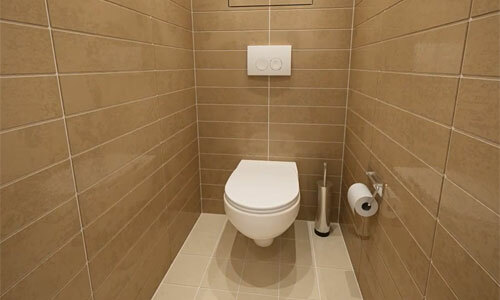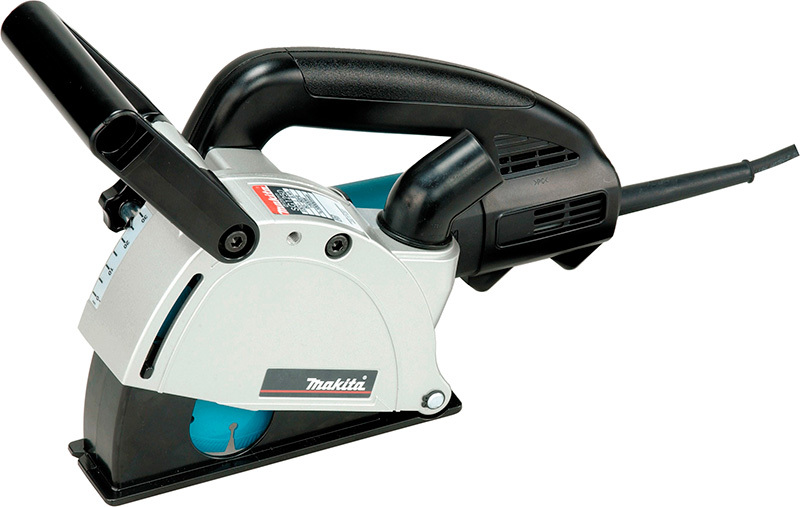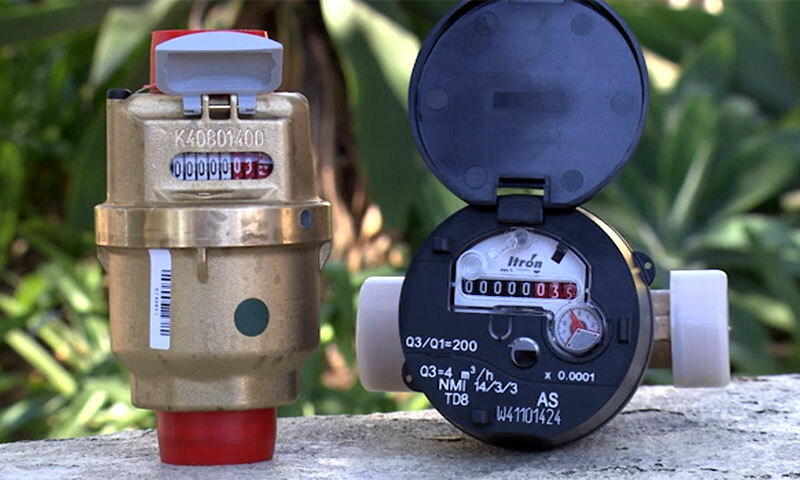
- How the hood works
- Types of cooker hoods
- How to make a hood in the kitchen with your own hands?
- Passive extract from plasterboard
- Active extract from plywood
- What it is necessary to know for ventilation to work effectively?
Extraction is a very important technique in the kitchen, as it draws odors, steam from the cooker and thus preserves health for you and your family members. During the conversion or repair, this problem may arise: the kitchen hood does not fit the headset in size or does not fit into the design at all. Therefore, the question arises, how to make a hood in the kitchen with your own hands, so that it ideally meets all the requirements.
to the contents ↑Function of the hood
The very name "hood" means pulling hot, polluted air from the kitchen and removing it from the room. The air is removed to the ventilation ducts of the building, therefore, when buying or manufacturing the hood with your own hands, you need to take care of the proper state of ventilation throughout the house. The effectiveness of the system directly depends on the thrust.
In addition to proper ventilation, it is necessary to ensure sufficient air flow to the room. For example, if you have metal-plastic windows with a high level of tightness, experts recommend using the microventilating function to install the ventilation ducts efficiently or to install air-vents on the windows.
to the table of contents ↑Types of kitchen hoods
 The modern market offers a wide range of hood models. It is quite natural that before you make the hood in the kitchen with your own hands, you will become acquainted with what they generally happen in order to choose the optimal design option.
The modern market offers a wide range of hood models. It is quite natural that before you make the hood in the kitchen with your own hands, you will become acquainted with what they generally happen in order to choose the optimal design option.
Mode of operation of
All devices for this purpose are divided into two large groups:
- Passive - this is a dome type hood. They remove air solely due to the upward thrust. Inside such devices there are no electric motors and fans. The extractor of this type will work only if the condition of the ventilation ducts of the house is good or due to the high ventilation pipe.
- Active - this is the hoods, which work provides an electric motor installed inside. These devices work stably, but they consume a lot of electricity.
Connection
By type of installation, the hoods are distinguished:
- Suspended( flat) fasten under the cabinet above the plate.
- Wall-mounted above the stove on the wall. The design of the case can be different.
- Built-in - fit into any design, as installed inside the cabinet or in the table.
- Angled - set in an angle.
- Island hoods. This type of device is designed for kitchens with an island. You can fasten the fixture anywhere in the room by hanging it to the ceiling.
Advice: The installation of a cooker hood, regardless of the type, above the hob must be 70 cm above the gas stove and 80 cm above the gas stove.
Ventilation method
According to the ventilation mode, the devices are divided into:
- Flowing - draw air from the kitchen into the ventilation shaft. This method of ventilation is called the exhaust mode. It is the most productive and effective.
- Circulation hoods - let air through the carbon filters in the housing. Fresh air is released at the outlet. For such an adaptation, ventilation in the kitchen is not required, so installing it is much easier, but the hood itself is less effective in terms of cleaning. The drawback of such extracts is the lack of fresh air, because as a result of processing by filters, the same, but purified air gets back to the kitchen. In addition, the filters must be cleaned and periodically changed.
Tip: When choosing a drawer that you will make with your own hands, consider each of these points. Only in this case you will provide yourself with comfortable cooking conditions and convenient operation of the equipment.
to the contents ↑How to make a hood in the kitchen with your own hands?
The easiest way is to install a corrugated tube with an electric fan in the kitchen cabinet, located directly above the stove. Such a hood is beautiful and exclusive you will not name, therefore we suggest you to make a more complex dome hood of passive type.
to Contents ↑Passive Extraction from Drywall
If you already have certain skills of assembling various household items, do not be afraid of a new job. You fully master this task and will be able to make a quality hood in the kitchen with your own hands. To do this, proceed as follows.
You will need:
- Moisture-resistant plasterboard. From this material we will make a duct for placing the air duct, as well as a dome of the device.
- Profiles made of galvanized metal. This material will be needed for the skeleton of the dome itself and the box.
- Corrugated pipe. This material will be used as an airway.
- Perforated metal corner - for the decoration of the corners of the device.
- Fasteners.
- Insulation material( for wrapping corrugated tubes).
- Paint and putty for finishing the dome.
- Tool Set:
- Rotary Hammer;
- Scissors for metal;
- Screwdriver;
- Level and roulette;
- Brushes, putty knives.
Stage №1.Layout of the room
 You will need to place on the wall not only the hood, but also the air duct, hidden in the plasterboard box, so find the ventilation hole in the kitchen:
You will need to place on the wall not only the hood, but also the air duct, hidden in the plasterboard box, so find the ventilation hole in the kitchen:
- if the ventilation is above the stove, the layout is almost ready;
- If the hole is located on the side, then it is necessary to mark the wall position for the ducting on the wall.
Tip: If in the repair plans - a suspended plasterboard ceiling, then the air duct can not be hidden, but let in under the ceiling lining.
Stage number 2.Duct frame construction:
- Mark on the wall the lower part of the duct surface for the duct.
- Attach the starting profile of galvanized metal to the lower part. For fastening, use an anchor with a 6 mm plastic sleeve.
- On the ceiling on the marked markings, fix the starting profile.
Tip: If the duct for the duct you have planned is curvilinear, then cut and curl the profile before fastening.
- Down from the start profile, lower a few vertical segments of the main profile.
- Use the screws to attach the vertical pieces to the starting profile.
- Form the frame for the box: install one more panel of the starting profile on the manufactured suspensions.
- Set the cross bars to the bottom of the resulting profile.
Stage №3.Making the hood:
- Prepare the lower hood frame from the starting profile.
- Fasten the frame to the kitchen wall.
Tip: If you install a kitchen hood in a niche, fix it is quite simple, and if in another place, then fasten the side parts of the frame to the box.
- Cut out the elements of the framework of the future structure from the main profile.
- Connect the frame parts to the lower frame.
- Strengthen the sidewalls of the hood by transversal bridges from the profile. This will give a design of reliability.
- Attach the air duct( corrugated pipe) to the vent hole.
Tip: To avoid noise during the operation of the equipment, wrap it with batting or prepared soundproof material.
Stage # 4.Finishing of the hood:
- Body and duct box with plasterboard.
- With metal perforated corner protect the corners of the structure.
- Gypsum plasterboard structure treat with putty, mask the joints of plasterboard sheets, as well as fasteners.
- Paint the hood in any color chosen by you or decorate it in any other way.
Tip: The hooding technology described above is suitable not only for a passive device, but also for making an active type hood. It is enough to install the motor at the entrance to the air duct inside the case and connect it to the network.
to the table of contents ↑Active plywood extract
 Another way to make a hood in the kitchen with your own hands from improvised tools is also very simple to perform. Choose the option that is more convenient for you and act.
Another way to make a hood in the kitchen with your own hands from improvised tools is also very simple to perform. Choose the option that is more convenient for you and act.
You will need:
- Old, but workable exhaust( you can buy an inexpensive new model);
- Thin plywood for the walls of the dome;
- Adhesive;
- Putty;
- Paint, lacquer;
- Electric motor;
- Clamps with soft nozzles made of plastic( or rubber);
- Brushes, putty knife.
Assembly instruction
- Based on the old hood we collect the basic elements: the lower frame with an exhaust grille, the electric motor.
Tip: Let the look of the design do not bother you, since all the details will be hidden behind the skin.
- Elements of the frame, made of curly strips, set on the base.
Tip: The shape of the frame can be made arbitrary, if only inside the dome fit air duct.
- The walls of the drawing dome are cut from thin plywood.
- Paste the framed elements with a frame.
Tip: For accurate gluing of the dome, use clamps with attachments.
- Allow the adhesive to fully cure.
- Treat the plywood dome with a putty.
- Paint the manufactured hood in your chosen color or varnish.
- Fasten the fixture to the wall.
Tip: If you used an old design, the wall mounts should have been preserved.
- Connect the air duct to the device.
- Disguise the air duct with a decorative box. How to do it, we described above.
What it is necessary to know for ventilation to work effectively?
To make the self-powered cooker hood to the kitchen effective and you did not have to puzzle the optimization problem in the near future, please read the information below.
Required power of the device
First of all, the power depends on the size of the kitchen - its area and height. If the hood is curved, the power of the air ducts is lost by one third. Therefore, it is necessary to calculate the power and depending on the shape of the device.
Tip: Power is the cleaning performance. It is measured in cubic meters per hour. According to the established norms, the air in the room must be updated 12 times per hour. Calculate the required power using a simple formula:
Kitchen area * ceiling height * 12
For example, if your kitchen has an area of 10 m2 and the ceiling height is 3 m, then the calculation looks like this:
10 * 3 * 12 * 1.3 = 468 m3
(If the shape of the hood is straight, then multiplying by 1.3 is not necessary).
Electrical safety
During operation, grease and splashes fall into the hood, which can cause a short circuit. In the kitchen, moisture accumulates and, at constantly high humidity, the chance of electric shock increases when the device is connected to the mains, so the hood that is made by hand must be connected to the network by three wires:
- earth;
- phase;
- zero.
The standard earthing must be colored yellow and have a green strip.
Tip: To make it easy for you to cope with the task, consider these recommendations:
- If the house has a ground loop, and there are euro outlets, then there is no problem: when connecting the device, connect the wire to the ground terminal, which is indicated by the word "ground" or strips of different lengths.
- If the equipment does not have a grounding connector, then screw the wire to the metal housing.
- If you do not have euro outlets, then do it by yourself: connect it to a blank neutral.
- Do not connect the neutral wire to pipes and batteries.
When making the hood, do not forget to follow the safety rules, especially with electrical work. If the design process does not cause you any difficulty, and the installation process scares you, then invite a specialist for these works. We hope that the self-made device for cleaning the air in the kitchen will please you and will preserve health for all household members.



